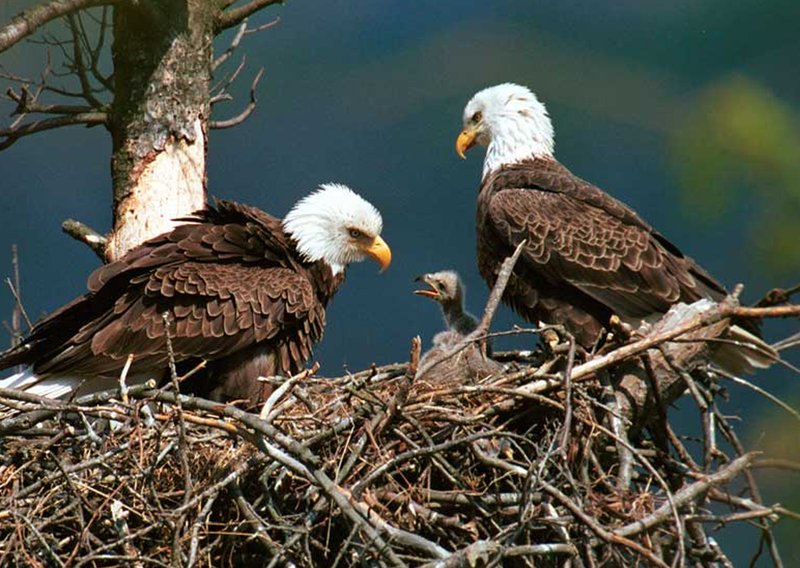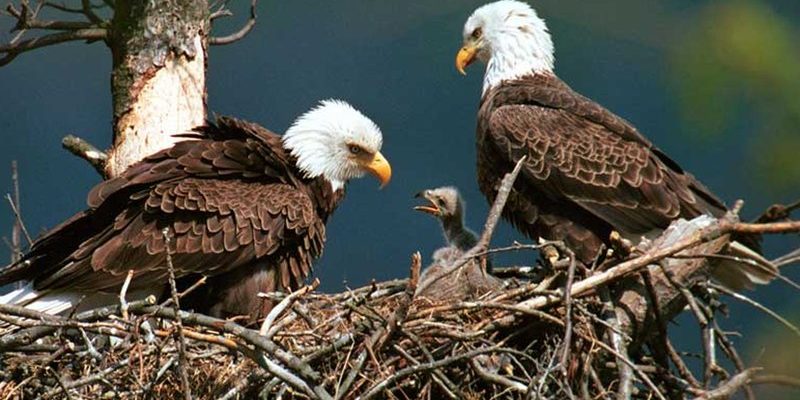
Bald eagles typically build their nests near water bodies, which provide them with the essentials: fish, their primary diet. Their nests are not just any typical bird nests; they are enormous structures, often larger than what you’d expect for birds. Imagine your living room filled with sticks, grasses, and twigs—it’s a cozy abode for these raptors. This article will guide you through the nesting habits, lifecycle stages, and everything you need to know about these incredible birds.
Where Do Bald Eagles Build Their Nests?
Bald eagles prefer locations that offer safety and easy access to food. That usually means they’re found near large bodies of water, such as lakes, rivers, and coastal regions. Building their nests in tall trees or cliffs allows them to keep their young safe from predators while remaining close to their food source.
Tree Selection: Bald eagles typically choose coniferous trees, like pines or firs, since these provide excellent cover. But they don’t just pick any tree; they go for those that are sturdy and tall, offering a clear view of the surroundings. You might be wondering why this matters. Well, being able to spot potential threats from high above helps keep both the parent eagles and their young safe.
Cliff Nests: In some cases, especially in more mountainous regions, bald eagles may opt for cliff ledges to build their nests. This offers an added level of safety but can be challenging to spot from a distance. The rocky surfaces serve as natural protection against ground predators, and eagles adapt well to the rugged terrain.
Characteristics of Bald Eagle Nests
Bald eagle nests are among the largest of any bird species. An average nest can measure up to 5 to 6 feet in diameter and weigh over a ton! Imagine that—a small vehicle made entirely of sticks! The eagles use various materials to construct their nests, including:
- Sticks and branches from nearby trees
- Grasses and reeds
- Feathers and fur for warmth
- Other natural materials found in their environment
Building a nest is no small feat; it can take eagles several weeks to complete one. They meticulously gather the materials, often adding on each year. Over time, they may even enlarge the nest, making it a bit like a family home that grows as the family expands.
After the nesting season, eagles might return to the same nest for years. This shows the strong bond they have with their territory and their commitment to raising their young in a familiar environment.
The Bald Eagle Breeding Season
Bald eagles generally mate around the late fall to early winter, and this is when their nesting activities ramp up. You could say it’s their version of spring cleaning, but in reality, it’s all about preparing for the new family members. Here’s what happens during the breeding season:
Pair Bonding: Eagles often form strong pair bonds, sometimes even mating for life. During this time, they engage in displays of affection, such as soaring together and performing aerial acrobatics. It’s quite a sight! This bonding helps ensure teamwork in raising their young.
Nesting Preparations: Once the pair is established, they start renovating or building their nests. This is serious work. They gather materials and may even steal from other birds’ nests if they can get away with it. The more comfortable and secure the nest, the better their chances of successfully raising their chicks.
Egg Laying and Incubation
When the nest is ready, the female bald eagle will lay one to three eggs, typically white or off-white in color. The laying usually occurs between January and March, depending on the geographical location. Here’s the exciting part:
Incubation Period: Both parents take turns incubating the eggs. This usually lasts around 35 days. Imagine them doing shifts, much like parents with a newborn. During this time, they need to protect the eggs from predators and maintain the right temperature.
Temperature Regulation: The parents sit closely together, ensuring warmth and security for the eggs. If the weather is particularly cold, they’ll snug each other closer together, and you might catch both of them in the nest, looking cozy as can be.
Hatching and Raising Chicks
Once the eggs hatch, you’ll see the cutest little chicks, often called eaglets, emerge. They’re covered in soft down feathers and are surprisingly helpless. Here’s what you can expect next:
Initial Care: The parents are incredibly attentive, bringing food to the nest—primarily fish, but they also feed on small mammals and birds. You might think of them as the ultimate takeout providers. During the first weeks, the eaglets rely on their parents for everything, from food to warmth.
Growth Stages: Over the next few weeks, you’ll notice the eaglets growing rapidly. They begin to feather out and gain strength. Around 10 to 12 weeks, they start developing their flight feathers and prepare for their first flight, called fledging. It’s like watching a teenager get ready for their first big adventure.
Post-Fledging Behavior
After the eaglets take their first flights, things get really interesting. They won’t just fly off and start hunting immediately; there’s a learning curve involved.
Learning to Hunt: The young eagles will often stay in the vicinity of the nest and practice their flying skills for several weeks. They might make short trips and gradually increase their range. You can imagine them flapping around, trying to catch the wind just right.
Parental Guidance: During this time, the parents continue to feed them, teaching them how to hunt and fish. It’s a lot like how we guide our kids as they learn to become independent adults; it’s all about patience and encouragement.
The Lifespan and Maturity of Bald Eagles
Bald eagles have a remarkable lifespan, living up to 20-30 years in the wild. Their journey isn’t so simple, though. Here’s what you should know about their maturity:
Reaching Maturity: Eagles typically reach sexual maturity at around 4 to 5 years. That means they’re finally ready to participate in the whole nesting and breeding routine we’ve talked about.
Winter Gatherings: Interestingly, bald eagles often congregate in large groups during the winter months, especially where food is abundant. This social aspect allows younger eagles to learn from older, more experienced ones while providing safety in numbers.
In conclusion, bald eagles embody a unique combination of strength, resilience, and nurturing. Their nesting habits and lifecycle stages showcase not only their survival skills but also their commitment to family. Understanding these majestic birds reveals a world of wonder that encourages us to protect their habitats and appreciate their role in our ecosystem. So, keep your eyes peeled—next time you’re near a river or lake, you might just catch a glimpse of these incredible creatures in action!

